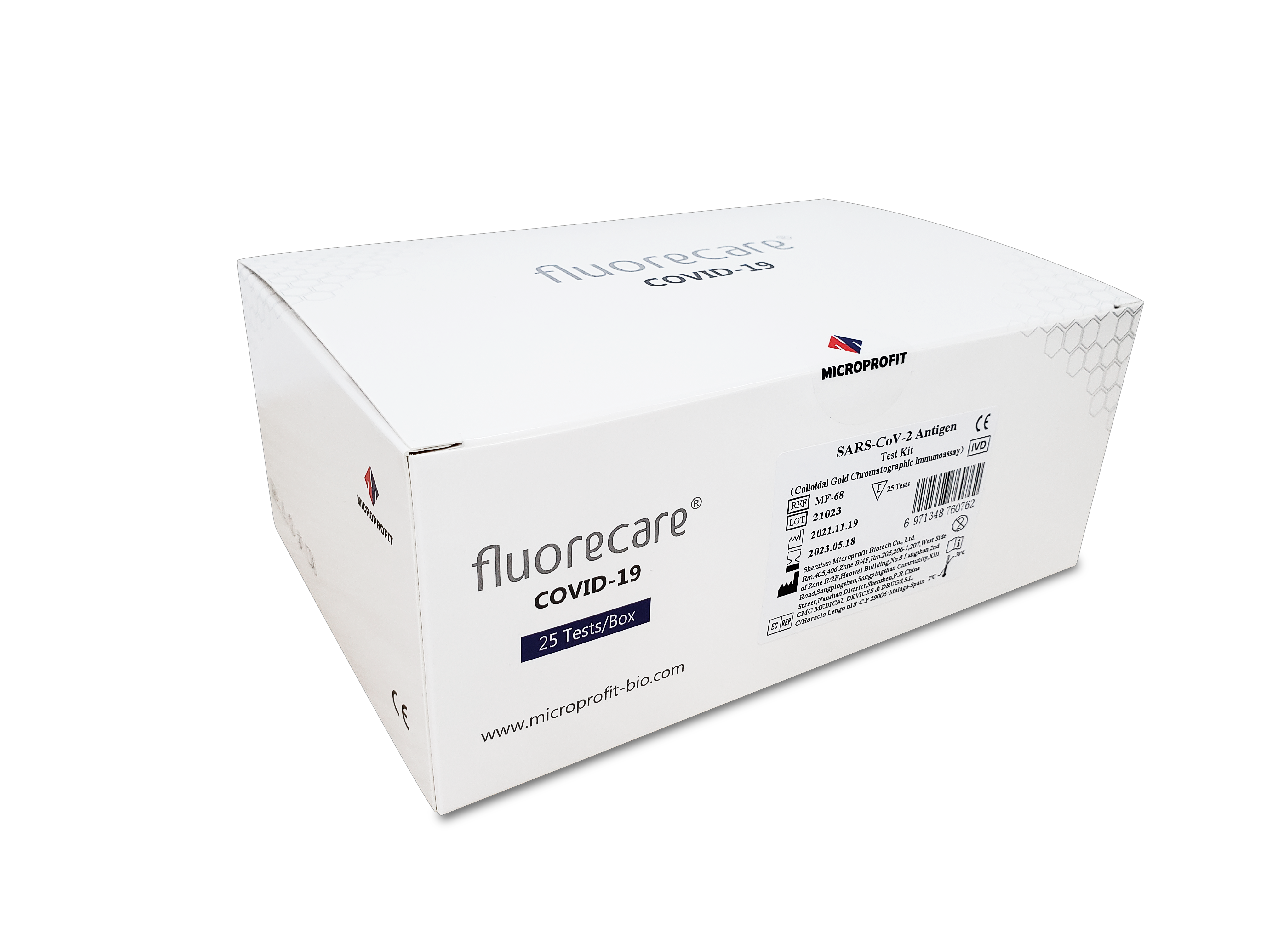
SARS-CoV-2 and Influenza A/B and RSV Antigen are detected qualitatively by colloidal gold method in population Oropharyngeal swabs, Nasal swabs or Nasopharyngeal swab samples. After the sample is added, the SARS-CoV-2 Antigen (or Influenza A/B & RSV) in the sample to be tested is combined with the colloidal gold-labeled SARS-CoV-2 Antigen (or Influenza A/B & RSV) antibody. SARS-CoV-2 Antigen (or Influenza A/B & RSV) on the binding pad to form the antibody-colloidal gold complex. Due to chromatography, the SARS-CoV-2 Antigen (or Influenza A/B & RSV)-antibody-colloidal gold complex diffuses across the nitrocellulose membrane. Within the detect line area, the SARS-CoV-2 Antigen (or Influenza A/B and RSV)-antibody complex binds to the antibody contained within the detect line area, showing a purple-red band. The colloidal gold-labeled SARS-CoV-2 Antigen (or Influenza A/B & RSV) antibody is spread in the quality control line (C) region and captured by sheep anti-mouse IgG to form red bands. When the reaction is finished, the results can be interpreted by visual observation.
1.This kit is a qualitative test and is used for in vitro ancillary diagnosis only.
2.With the limit of the antigen detection reagent method, the minimum detection limit (sensitivity analysis) is usually lower than the nucleic acid reagent. Therefore, the researcher should pay attention to possible cases of false negativity. The investigator should also look at patients' symptoms. Further testing, including nucleic acid tests for suspected negative results, is recommended to aid decision making.
3. Unreasonable sampling, handling, processing and low virus content in samples can lead to false negatives.
4. The test results of this reagent are for clinical reference only and should not be used as the sole basis for clinical diagnosis and treatment. The definitive diagnosis of the disease should be based on a comprehensive assessment of all clinical conditions and laboratory results once made.